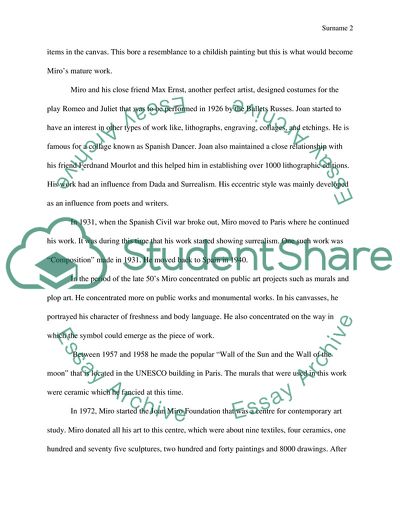Cite this document
(Biography of Joan Miro Artist Research Paper Example | Topics and Well Written Essays - 1250 words, n.d.)
Biography of Joan Miro Artist Research Paper Example | Topics and Well Written Essays - 1250 words. https://studentshare.org/biographies/1798564-artist-joan-miro
Biography of Joan Miro Artist Research Paper Example | Topics and Well Written Essays - 1250 words. https://studentshare.org/biographies/1798564-artist-joan-miro
(Biography of Joan Miro Artist Research Paper Example | Topics and Well Written Essays - 1250 Words)
Biography of Joan Miro Artist Research Paper Example | Topics and Well Written Essays - 1250 Words. https://studentshare.org/biographies/1798564-artist-joan-miro.
Biography of Joan Miro Artist Research Paper Example | Topics and Well Written Essays - 1250 Words. https://studentshare.org/biographies/1798564-artist-joan-miro.
“Biography of Joan Miro Artist Research Paper Example | Topics and Well Written Essays - 1250 Words”. https://studentshare.org/biographies/1798564-artist-joan-miro.


